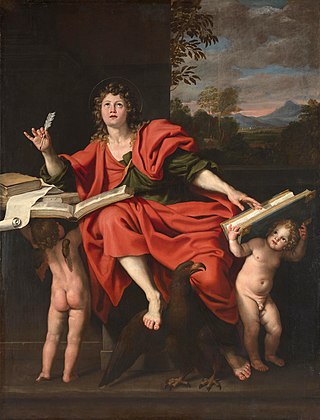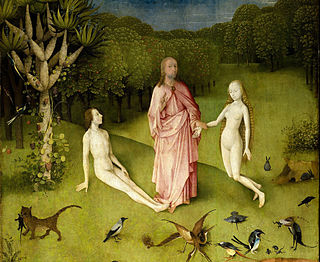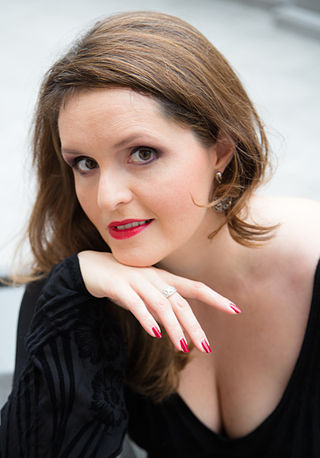Related Research Articles

Franz Schmidt, also Ferenc Schmidt was an Austro-Hungarian composer, cellist and pianist.
An oratorio is a musical composition with dramatic or narrative text for choir, soloists and orchestra or other ensemble.

The Seasons is a secular oratorio by Joseph Haydn, first performed in 1801.

Great Mass in C minor, K. 427/417a, is the common name of the musical setting of the mass by Wolfgang Amadeus Mozart, which is considered one of his greatest works. He composed it in Vienna in 1782 and 1783, after his marriage, when he moved to Vienna from Salzburg. The large-scale work, a missa solemnis, is scored for two soprano soloists, a tenor and a bass, double chorus and large orchestra. It remained unfinished, missing large portions of the Credo and the complete Agnus Dei.

The events of Revelation are the events that occur in the Book of Revelation of the New Testament. An outline follows below, chapter by chapter.

Sancta Civitas is an oratorio by Ralph Vaughan Williams. Written between 1923 and 1925, it was his first major work since the Mass in G minor two years previously. Vaughan Williams began working on the piece from a rented furnished house in the village of Danbury, Essex, found for him by his former pupil, Cecil Armstrong Gibbs.

The Seven Seals of God from the Bible's Book of Revelation are the seven symbolic seals that secure the book or scroll that John of Patmos saw in an apocalyptic vision. The opening of the seals of the document occurs in Rev Ch 5–8 and marks the Second Coming of the Christ and the beginning of The Apocalypse/Revelation. Upon the Lamb of God/Lion of Judah opening a seal on the cover of the book/scroll, a judgment is released or an apocalyptic event occurs. The opening of the first four Seals releases the Four Horsemen, each with his own specific mission. The opening of the fifth Seal releases the cries of martyrs for the "Word/Wrath of God". The sixth Seal prompts plagues, storms and other cataclysmic events. The seventh Seal cues seven angelic trumpeters who in turn cue the seven bowl judgments and more cataclysmic events.

Hodie is a cantata by Ralph Vaughan Williams. Composed between 1953 and 1954, it is the composer's last major choral-orchestral composition, and was premiered under his baton at Worcester Cathedral, as part of the Three Choirs Festival, on 8 September 1954. The piece is dedicated to Herbert Howells. The cantata, in 16 movements, is scored for chorus, boys' choir, organ and orchestra, and features tenor, baritone, and soprano soloists.

The Vienna Singverein is the concert choir of the Vienna Musikverein with around 230 members. It is regularly requested by top orchestras and conductors for large and varied projects.

The Te Deum in C major, WAB 45, is a setting of the Te Deum hymn, composed by Anton Bruckner for SATB choir and soloists, orchestra, and organ ad libitum.

Anton Bruckner's Psalm 150, WAB 38, is a setting of Psalm 150 for mixed chorus, soprano soloist and orchestra written in 1892.

Messiah, the English-language oratorio composed by George Frideric Handel in 1741, is structured in three parts. This listing covers Part III in a table and comments on individual movements, reflecting the relation of the musical setting to the text. Part I begins with the prophecy of the Messiah and his birth, shows the annunciation to the shepherds as a scene from the Gospel of Luke, and reflects the Messiah's deeds on Earth. Part II covers the Passion, death, resurrection, ascension, and the later spreading of the Gospel. Part III concentrates on Paul's teaching of the resurrection of the dead and Christ's glorification in heaven.

The Creation, the oratorio by Joseph Haydn, is structured in three parts. He composed it in 1796–1798 on German text as Die Schöpfung. The work is set for soloists, chorus and orchestra. Its movements are listed in tables for their form, voice, key, tempo marking, time signature and source.

Sing Unto God, is an anthem composed by George Frideric Handel. It was performed for the royal wedding on 27 April 1736 at the Chapel Royal in St James's Palace, London with Francesca Cuzzoni-Sandoni, Carlo Broschi "Farinelli", and Francesco Bernardi "Senesino". The text was adapted from verses of Psalms 68, 106 and 128.

Sandra Trattnigg is an Austrian opera and concert soprano.
Manfred Hemm is an Austrian opera singer who has sung leading bass-baritone roles in the opera houses of Europe and North America. His discography includes Papageno in The Magic Flute for Deutsche Grammophon and the bass soloist in Franz Schmidt's oratorio Das Buch Mit Sieben Siegeln for Chandos. He created the role of Der Stadtrichter in Friedrich Cerha's Der Rattenfänger (1987) and the title role in Gottfried von Einem's Der Tulifant (1990) in their world premieres.

Symphony No. 10, Sumé pater patrium: Sinfonia ameríndia com coros (Oratorio) is a composition by the Brazilian composer Heitor Villa-Lobos, written in 1952–53. The broadcast performance of the world-premiere performance under the composer's direction lasts just over 67 minutes.
Cornelia Wulkopf is a German operatic mezzo-soprano and contralto. A long-time member of the Bavarian State Opera, she has performed leading parts at international opera houses and festivals. She made her debut at the Bayreuth Festival in the Jahrhundertring and sang in Franz Schmidt's oratorio Das Buch mit sieben Siegeln at the Salzburg Festival.
Christian Elsner is a German tenor in opera and concert, and an academic voice teacher at the Hochschule für Musik Karlsruhe. He focused first on lied and oratorio, then entered the opera stage in roles such as Handel's Tabarco and Mozart's Pedrillo. From 2007, he also performed roles such as Wagner's Siegmund and at international opera houses and festivals.
Rudolf Gerlach-Rusnak was a German operatic and concert lyrical tenor, and a member of the Bavarian State Opera who had an international career and was known for his exceptional high register.
References
- ↑ This section is adapted from the programme-note by Schmidt for the original performance.
- ↑ The rainbow signifies the Covenant between God and the Earth, see Genesis IX.13.
- ↑ Franz Schmidt, in his own original commentary upon the text used for the oratorio, explains that he identifies the white rider as Jesus Christ (not as the Holy Spirit or the Antichrist). F. Schmidt, 'Einige Bemerkungen zum text des Oratoriums "Das Buch mit sieben Siegeln".' (written 1938). '... der christlichen Heilslehre durch den weißen Reiter (Jesus Christ) und seine Himmlischen Heerscharen verfällt die Menschheit in Nacht und Wirrsal;'
- ↑ Schmidt's gloss.
- ↑ This section is adapted from the German Wikipedia.